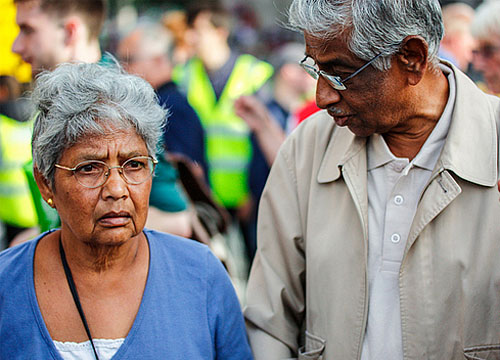
AsianScientist (Jun. 10, 2013) – One of the surprising findings of a 2012 book, Paying the Professoriate: A Global Comparison of Compensation and Contracts, was that university teachers in India are among the best paid in the world.
Average monthly salaries for entry-level positions at Indian institutions, estimated to be nearly $4,000 in purchasing power parity (PPP) dollars – in which salaries reflect what it takes to purchase similar goods and services in different countries, is higher than in other developing countries, and substantially higher than China’s $259 PPP.
Though India’s teachers are paid well, few Indians appear interested in taking up the profession in India. Government officials have estimated faculty shortages at 30 percent or higher. Even the country’s most venerated institutions – the Indian Institutes of Technology (IITs), the Indian Institutes of Management (IIMs) and others – are short of qualified faculty.
The larger implications of these shortages are enormous – both in terms of the ongoing expansion of higher education as well as the quality of education. In particular, the government’s plans to support the rise of at least a few institutions into world-rankings – where India’s universities are nearly absent – are unlikely to succeed without large numbers of well-qualified faculty across a wide range of disciplines.
The obvious question is that if, as some government officials seem fond of repeating, salaries are so good, why is the supply of faculty so poor?
Many universities have not made new appointments or regularized the positions of temporary teachers. In addition, while there are plenty of ‘qualified’ candidates, few may actually be suitable for faculty positions. How can I ever forget the successful PhD defense of a candidate whose dissertation was written in nearly-perfect English but barely spoke Hindi or English?!
Public institutions are also required to reserve about 50 percent of positions for candidates from historically-disadvantaged sections of the population – the so-called “Scheduled Castes” (SCs), “Scheduled Tribes” (STs), and “Other Backward Classes” (OBCs).
Most of these ‘reserved’ positions remain unoccupied since – due to India’s broad failures in primary and higher education – all too few SCs, STs, and OBCs are qualified to be hired as teachers.
I believe, however, that the larger problem is this: neither students nor parents see academia as a worthwhile profession. Students have no desire to take up the profession in India even though some are quite interested in going abroad to pursue an academic career.
In a society where knowledge is said to be highly valued, why are so few Indians interested in becoming knowledge-providers?
First, it is a myth that Indians value knowledge. What they value is formal education.
Second, teachers enjoyed prestige into the first few decades of independence. However, beginning from the 1970s, the politicization of higher education eroded the status of teachers and of educational institutions. It did not help that salaries and budgets stagnated during the lost decades of the 1980s and the 1990s. Low salaries and lack of social status meant that a majority of those who became teachers were those who were uninterested in the profession. This showed in their indifferent performance as educators. As a result, today, even those who value knowledge do not think much of teachers.
Third, in India, as in other modernizing societies, the worth of a profession is almost entirely measured in terms of incomes. With salaries going up by as much as 40 to 60 percent in 2006, one might have expected more young people to take up the profession. However, salaries still do not compare favorably with those in some sectors of the ‘white’ economy and certainly not with the ‘black’ money in others.
It is evident that current salaries, even if competitive by international standards, have failed to impress, because the profession is also short on prestige. It is not surprising then that, as Shyam Sunder, Yale School of Management, says, the “best brains are selling soaps and getting into civil service.”
The government must acknowledge that the supply situation is more severe than is commonly believed and likely to get worse when it comes to world-class faculty despite competitive salaries.
Better salaries have not persuaded more students to take up the profession. In fact, current salaries have not even impressed many children of professors to join academia. Nor have better salaries lured Indians from reputed Western or Eastern universities to take up faculty positions in India.
It is futile for Indian government officials to bemoan the absence of world-ranked universities in the country if they are not prepared to over-compensate for poor supply and, one might add, poor working conditions as well. If the current situation is any indication, faculty at elite institutions will have to be better-compensated. Only then, perhaps, more motivated students will take up the profession and a few more faculty members from abroad might be tempted to return as well.
Pushkar is a faculty member at the Department of Humanities and Management at the Birla Institute of Technology and Science (BITS) Pilani-Goa. He has a PhD in political science (McGill University) and previously taught at the University of Goa, Concordia University, McGill University, and the University of Ottawa.
——
Copyright: Asian Scientist Magazine; Photo: Piyush Chandra/Flickr/CC.
Disclaimer: This article does not necessarily reflect the views of AsianScientist or its staff.












